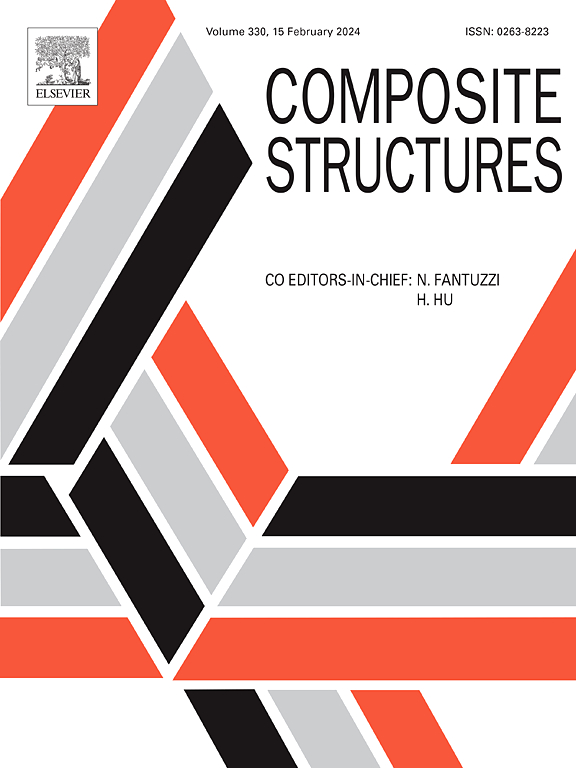A novel mesoscopic modeling method of triaxial woven fabric composites considering yarn-yarn contact geometry
IF 6.3
2区 材料科学
Q1 MATERIALS SCIENCE, COMPOSITES
引用次数: 0
Abstract
This paper presents a high-fidelity mesoscopic triaxial woven fabric composites model with realistic contact surface morphology is designed parametrically from the contact region at the yarn interweaving position for avoiding volumetric interpenetration of the yarns. Additionally, the geometry of yarn-yarn contact is parametrically characterized. The geometrical features of the model are validated by the results extracted from micro-CT reconstruction. The introduction of experimental methodology for the direct observation of the actual contact surface morphology has validated the parametric characterization of the contact geometry. A Python script is developed to automate the addition of periodic boundary conditions and the accuracy of the elastic property prediction is evaluated experimentally. The results demonstrate that triaxial woven fabric composites modeling approach achieves fine mesoscale characterization and high elastic property prediction accuracy. The comparison results of two different contact surface morphology models highlight the significance of yarn-yarn contact morphology features in textile structure modeling.
一种考虑纱线-纱线接触几何的三轴机织物复合材料细观建模方法
本文从纱线交织处的接触区域出发,参数化地设计了具有真实接触面形态的高保真介观三轴机织物复合材料模型,以避免纱线的体积互穿。此外,纱线接触的几何形状参数化表征。利用微ct重构结果验证了模型的几何特征。引入直接观察实际接触表面形貌的实验方法,验证了接触几何的参数化表征。开发了Python脚本实现周期边界条件的自动添加,并通过实验对弹性特性预测的准确性进行了评价。结果表明,三轴机织物复合材料建模方法具有较好的中尺度表征和较高的弹性性能预测精度。两种不同接触表面形态模型的对比结果突出了纱线接触形态特征在纺织品结构建模中的重要意义。
本文章由计算机程序翻译,如有差异,请以英文原文为准。
求助全文
约1分钟内获得全文
求助全文
来源期刊

Composite Structures
工程技术-材料科学:复合
CiteScore
12.00
自引率
12.70%
发文量
1246
审稿时长
78 days
期刊介绍:
The past few decades have seen outstanding advances in the use of composite materials in structural applications. There can be little doubt that, within engineering circles, composites have revolutionised traditional design concepts and made possible an unparalleled range of new and exciting possibilities as viable materials for construction. Composite Structures, an International Journal, disseminates knowledge between users, manufacturers, designers and researchers involved in structures or structural components manufactured using composite materials.
The journal publishes papers which contribute to knowledge in the use of composite materials in engineering structures. Papers deal with design, research and development studies, experimental investigations, theoretical analysis and fabrication techniques relevant to the application of composites in load-bearing components for assemblies, ranging from individual components such as plates and shells to complete composite structures.
 求助内容:
求助内容: 应助结果提醒方式:
应助结果提醒方式:


